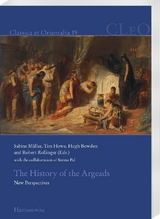Faust, Avraham. 2018. Forts or agricultural estates? Persian period settlement in the territories of the former kingdom of Judah. Palestine Exploration Quarterly 150 (1), 34-59.
The territories of the former kingdom of Judah were only sparsely settled during the Persian period, as exemplified by the extreme rarity of domestic structures unearthed in excavations. Viewed against this background, the large number of excavated forts and isolated administrative buildings from this period is remarkable, and they apparently outnumber the period’s excavated dwellings. Not only is this an extremely unlikely situation, but various lines of evidence, pertaining to specific sites as well as to the phenomenon as a whole, render the possibility that all these structures were forts or administrative buildings re-examines implausible. Consequently, this article reexamines the phenomenon within the social landscape of the region in particular, and of the Achaemenid empire in general, in an attempt to embed those unique buildings within the broader demographic and political reality of this time. Given the location of many of the sites and the finds unearthed in them, and in light of the demographic reality in the region and of the broader Achaemenid imperial policy, the article suggests that most of the so-called forts were estates, created in the process of the resettlement of this previously devastated region.

 Müllerm Sabine, Timothy Howe, Hugh Bowden & Robert Rollinger (eds.). 2017.
Müllerm Sabine, Timothy Howe, Hugh Bowden & Robert Rollinger (eds.). 2017.  Hyland, John. 2017.
Hyland, John. 2017. 
 Lanzillotta, Lautaro Roig with the collaboration of Luisa Lesage (eds.). 2017.
Lanzillotta, Lautaro Roig with the collaboration of Luisa Lesage (eds.). 2017. Gallarreta, Jose E. Balcells. 2017.
Gallarreta, Jose E. Balcells. 2017.  International Symposium
International Symposium Squitieri, Andrea . 2017.
Squitieri, Andrea . 2017.